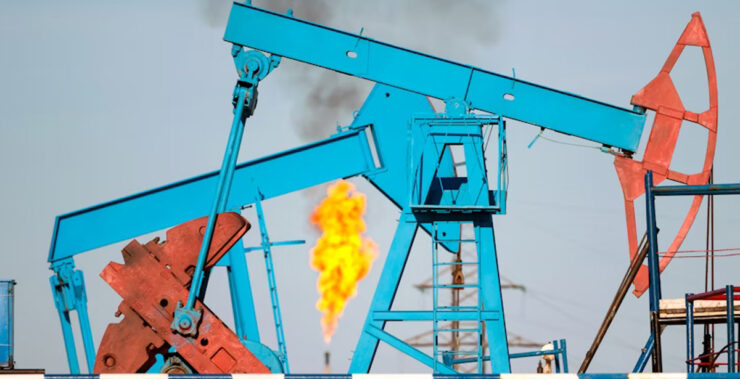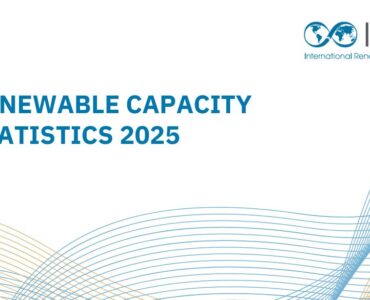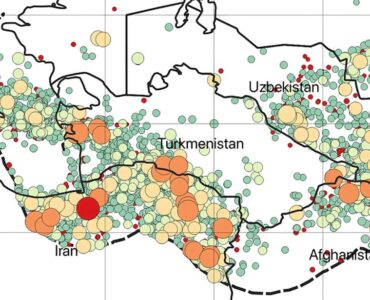The International Energy Agency (IEA) has published its annual Global Methane Tracker 2024 report in March, 2024. The report provides the latest estimates of methane emissions from the energy sector. This article highlights the main points raised about Turkmenistan in the report.
In 2023, around 120 Mt of methane emissions were from fossil fuels, 80 Mt of which came from top 10 methane emitting countries. The United States, Russia, and China topped the list. Turkmenistan ranked 6th with 5.2 Mt of methane emissions from the energy sector in 2023. With an additional 0.3 Mt of methane from the agriculture sector and 0.05 Mt from waste, 5.56 Mt were emitted in total. Turkmenistan’s oil and gas industry’s emission intensity was the highest in the world, totalling 1.6 kg of methane per GJ of energy produced.
Detailed breakdown of emissions has been reported. Majority of emissions are estimated to come from onshore gas production with 1032 kt of methane vented and 414 kt flared. Onshore and offshore oil production also had significant emissions, most of which were vented. Fugitive emissions have also been detected from gas pipelines and LNG facilities (74 kt) and some share (118 kt) vented.
Furthermore, satellite data analyzed by Kayrros has detected more than 250 high-emission events in Turkmenistan over just 90 days of coverage that was possible in 2023.
At the COP28 summit in Dubai many countries have pledged to accelerate their efforts to reduce methane emissions and Turkmenistan joined the Global Methane Pledge. Turkmengas, however, has not made any public commitments to reduce its methane emissions.
There are many international methane initiatives that can provide guidance to governments and companies that aim to reduce methane emissions. Among these initiatives are UNEP’s International Methane Emissions Observatory, the World Bank’s Global Flaring and Methane Reduction Partnership, the Climate and Clean Air Coalition, the Clean Air Task Force, the Global Methane Hub, and others. These programs give guidance to the governments on emission reductions, help to develop national roadmaps, and provide grant funding.






